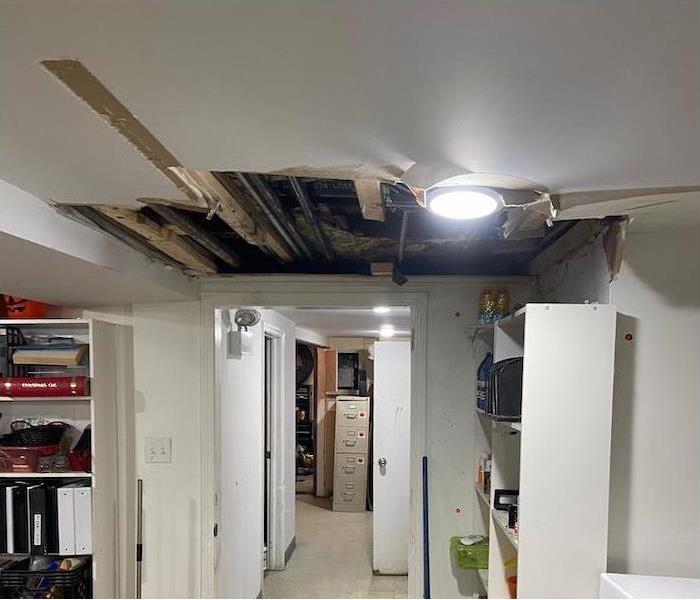Help for Drying Water Damaged Homes in Chicago
3/28/2023 (Permalink)
 Our water damage technicians have the equipment and experience to restore your Chicago home to preloss condition.
Our water damage technicians have the equipment and experience to restore your Chicago home to preloss condition.
SERVPRO Water Restoration Technicians Remediate Moisture with Powerful Drying Equipment
Water damage can be a distressing sight, particularly if the damage has been ongoing for some time. However, elevated moisture can impact more than surface-level structures. It may have microbial growth present, creating potential air quality concerns for homeowners. While letting it dry may seem like the most straightforward solution, this strategy can backfire. It is safer for professional restoration services to stop damage to property and air quality.
SERVPRO’s 24-hour availability for water damage cleanup in Chicago ensures that residents receive remediation, repairs, and restoration services necessary to return their homes to a pre-damage state. SERVPRO tools, including extractors and structural drying equipment, are designed to eliminate excess moisture from surfaces and the air more efficiently than DIY solutions.
Why DIY Solutions Can Exacerbate Water Damage
The key to effective water damage drying is dehumidification combined with air movement after thorough water removal. Chicago homeowners may feel ready to tackle wet drywall or carpet independently. However, without proper inspection tools, they may not be aware of:
- The scope of the water damage
- The source causing the continuous leaks or moisture
- The presence of mold
- The extent to which structures have been saturated
- Whether other crucial systems, like electrical or HVAC, are affected by water
SERVPRO trains technicians to detect and mitigate all of these factors in ways that help homeowners save on potential restoration costs. Water damage requires a careful balance of air movement and dehumidification to prevent secondary damage to surfaces and increases in relative humidity.
SERVPRO Water Damage Mitigation and Drying for Residential Structures
Chicago SERVPRO technicians can deploy a full suite of tools for moisture removal, such as:
- Penetrating and surface-level inspection sensors and meters calibrated for materials like wood and drywall, as well as thermal imaging cameras to inspect water damage behind surfaces
- Portable and truck-mounted extractors that can deploy heated solvents for cleaning of carpet and upholstery and pulling excess moisture out of nooks, crannies, and structural materials
- EPA-registered antimicrobial solutions designed to remediate microbes and odor-causing bacteria to sanitize and restore space
- Structural drying tools, which include commercial-grade air movers and dehumidifiers
- Odor control tools, such as wet foggers, odor counteractant beads, and hydroxyl generators
Temporary containment measures like polyethylene drying chambers can accelerate water cleanup in open spaces. Specialized techniques that target wet carpet and pad, as well as upholstery and drapes, can keep restoration on-site without the need to move belongings offsite.
In a typical residential water damage incident, technicians can set up air movement equipment every 10 to 16 linear feet to cover approximately 150 square feet per unit. These air movers are typically paired with low-grain refrigerant (LGR) dehumidifiers to collect humidity pulled out of surfaces and into the air.
For dehumidification, moist air is passed over cold refrigerant coils and collected for disposal in a treated sewer. At the same time, the LGR units expel warm, dry air that is pushed toward necessary surfaces by the air movers. High-powered desiccant dehumidifiers are also available for remediation of damage to structural materials. Technicians carefully calculate drying goals and position air movement and dehumidification units accordingly to save as much material as is feasible after a water damage disaster.
SERVPRO of West Loop / Bucktown / Greektown is proud to say that We’re Faster To Any Size Disaster and ready to address homeowners ’ concerns 24/7. Call (773) 434-9100 to get started.






 24/7 Emergency Service
24/7 Emergency Service